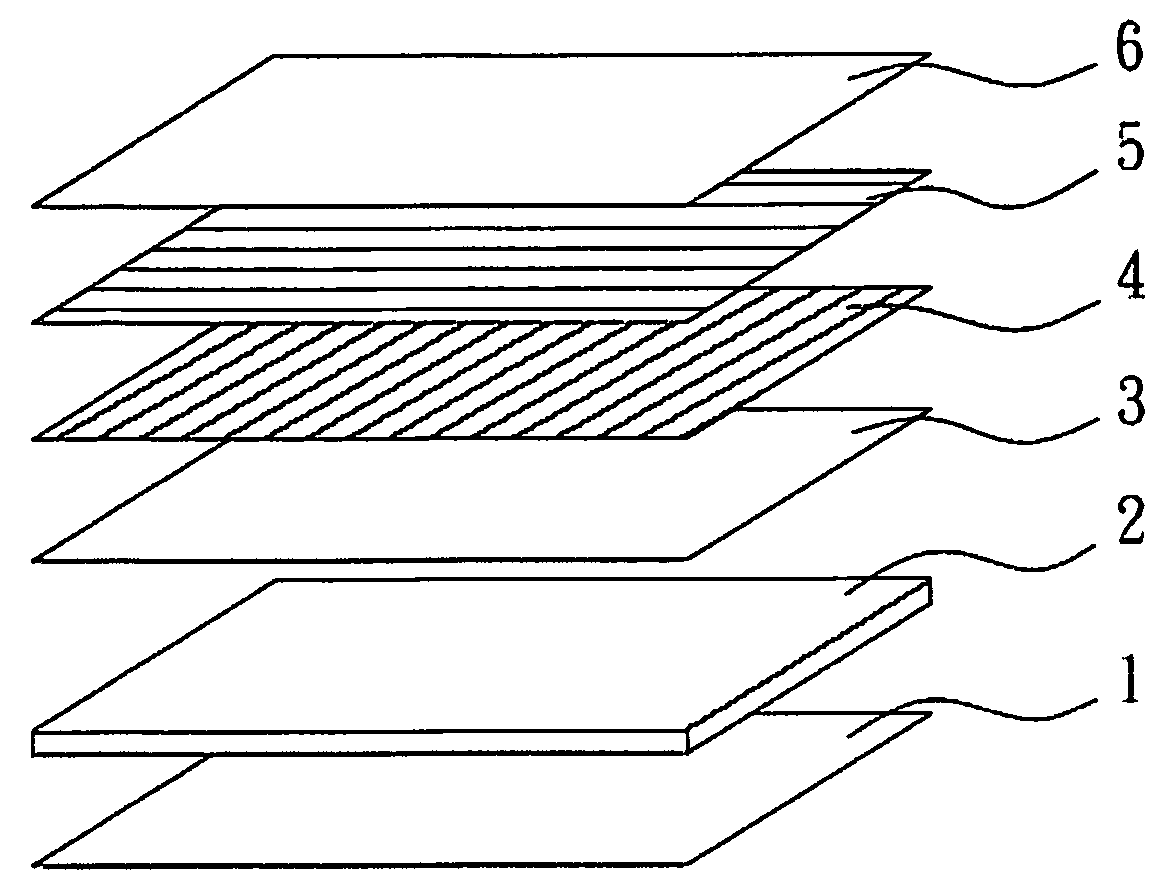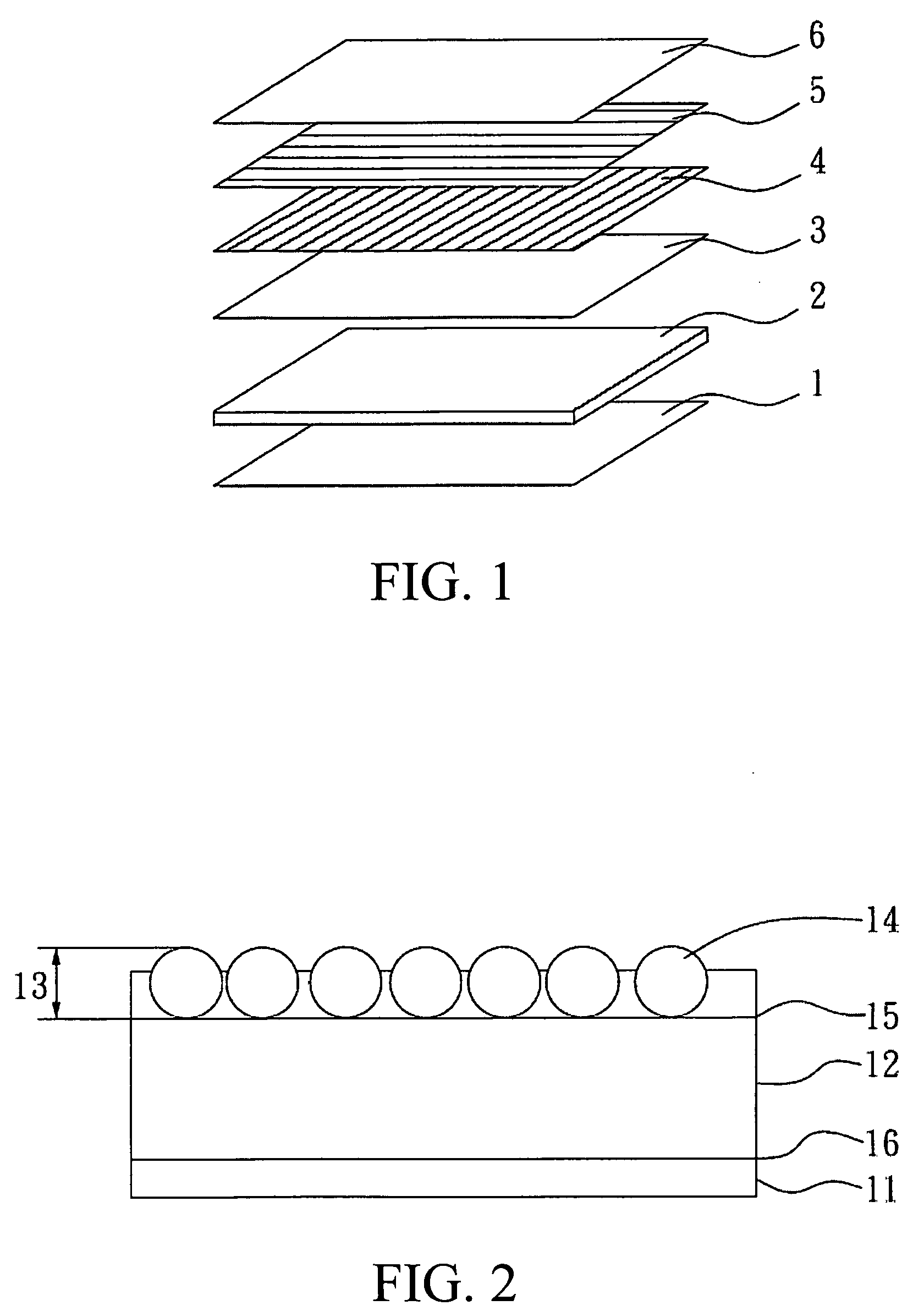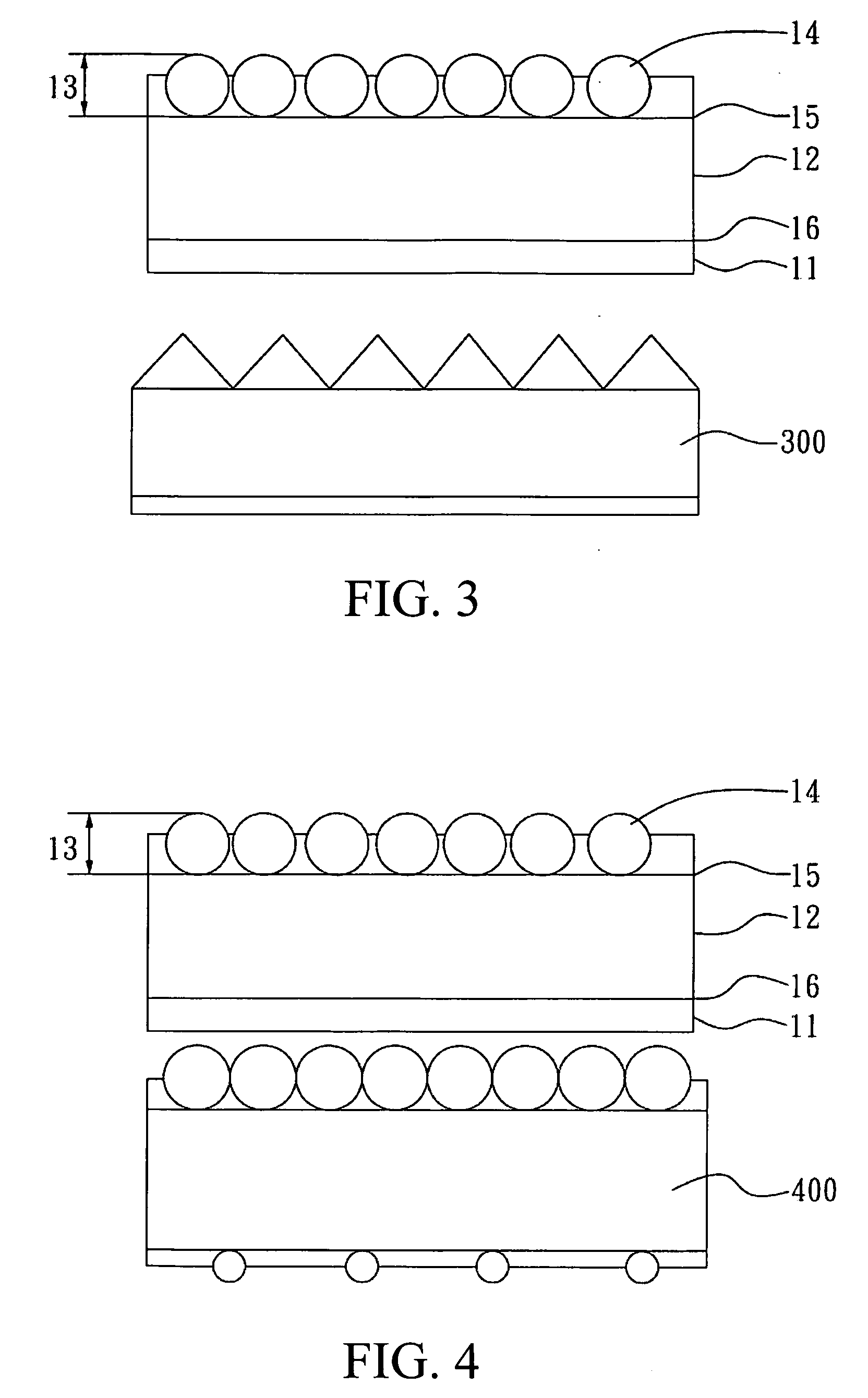Scratch-resistant optical film having organic particles with highly uniform particle size
- Summary
- Abstract
- Description
- Claims
- Application Information
AI Technical Summary
Benefits of technology
Problems solved by technology
Method used
Image
Examples
preparation example 1
[0054]Formulating a UV curable resin formulation A: In a 250 mL glass bottle, 40 g toluene was added. With high speed stirring, the following substances were added in sequence: 10 g dipentaerythritol hexaacrylate, 2 g trimethylol propane trimethacrylate, 14 g pentaerythritol triacrylate, an oligomer: 30 g of an aliphatic urethane hexaacrylate [Etercure 6415-100, Eternal Co.], and a photoinitiator: 4 g 1-hydroxy cyclohexyl phenyl ketone to provide 100 g of a UV curable resin formulation A with a solids content of about 60%.
preparation example 2
[0055]Formulating a UV curable resin formulation B: In a 250 mL glass bottle, 34 g toluene and 6 g butanone were added. With high speed stirring, the following substances were added in sequence: 16 g dipentaerythritol hexaacrylate, 2 g trimethylol propane trimethacrylate, 20 g pentaerythritol triacrylate, an oligomer: 18 g of an aliphatic urethane hexaacrylate [Etercure 6112-100, Eternal Co.], and a photoinitiator: 4 g 1-hydroxy cyclohexyl phenyl ketone to provide 100 g of a UV curable resin formulation B with a solids content of about 60%.
preparation example 3
First Hard Coat Layer
Diffusion Layer
[0056]To a 250 ml glass bottle, 24 g toluene and 8 g butanone were added as a solvent. With high speed stirring, the following substances were added in sequence: 4 g acrylic particles with an average particle size of 8 μm [SSX-108, SEKISUI PLASTICS Co.; highly crosslinked organic particles produced from 50:50 methyl methacrylate and ethylene glycol dimethacrylate and having a particle size of 8 μm±5%]; 40 g of the UV curable resin formulation A prepared in Preparation Example 1 (with a solids content of about 60%, Eternal Company); a thermal setting resin: 20 g of polymethacrylic polyol resin [Eterac 7361-ts-50, Eternal Company] (with a solids content of about 50%); 2 g of a curing agent [Desmodur 3390, Bayer Co.] (with a solids content of about 75%); and 2 g of an anti-static agent [GMB-36M-AS, Marubishi Oil Chem. Co., Ltd] (with a solids content of about 20%) to prepare a coating material with a total weight of about 100 g and solids content of ...
PUM
| Property | Measurement | Unit |
|---|---|---|
| Fraction | aaaaa | aaaaa |
| Fraction | aaaaa | aaaaa |
| Thickness | aaaaa | aaaaa |
Abstract
Description
Claims
Application Information
 Login to View More
Login to View More - R&D
- Intellectual Property
- Life Sciences
- Materials
- Tech Scout
- Unparalleled Data Quality
- Higher Quality Content
- 60% Fewer Hallucinations
Browse by: Latest US Patents, China's latest patents, Technical Efficacy Thesaurus, Application Domain, Technology Topic, Popular Technical Reports.
© 2025 PatSnap. All rights reserved.Legal|Privacy policy|Modern Slavery Act Transparency Statement|Sitemap|About US| Contact US: help@patsnap.com



